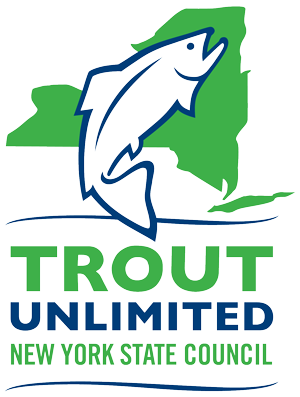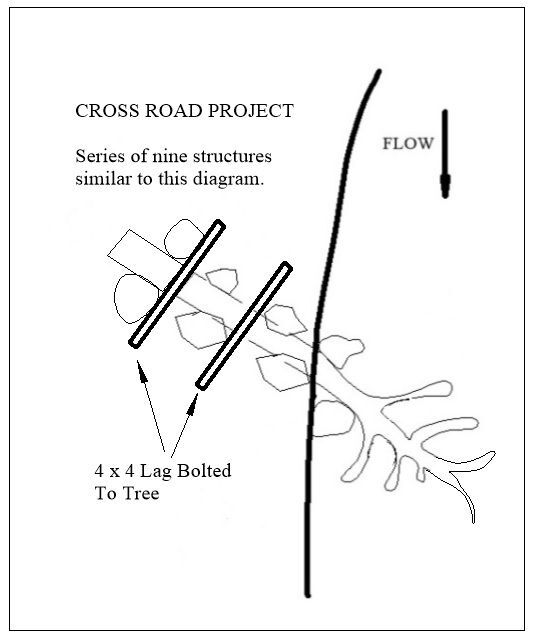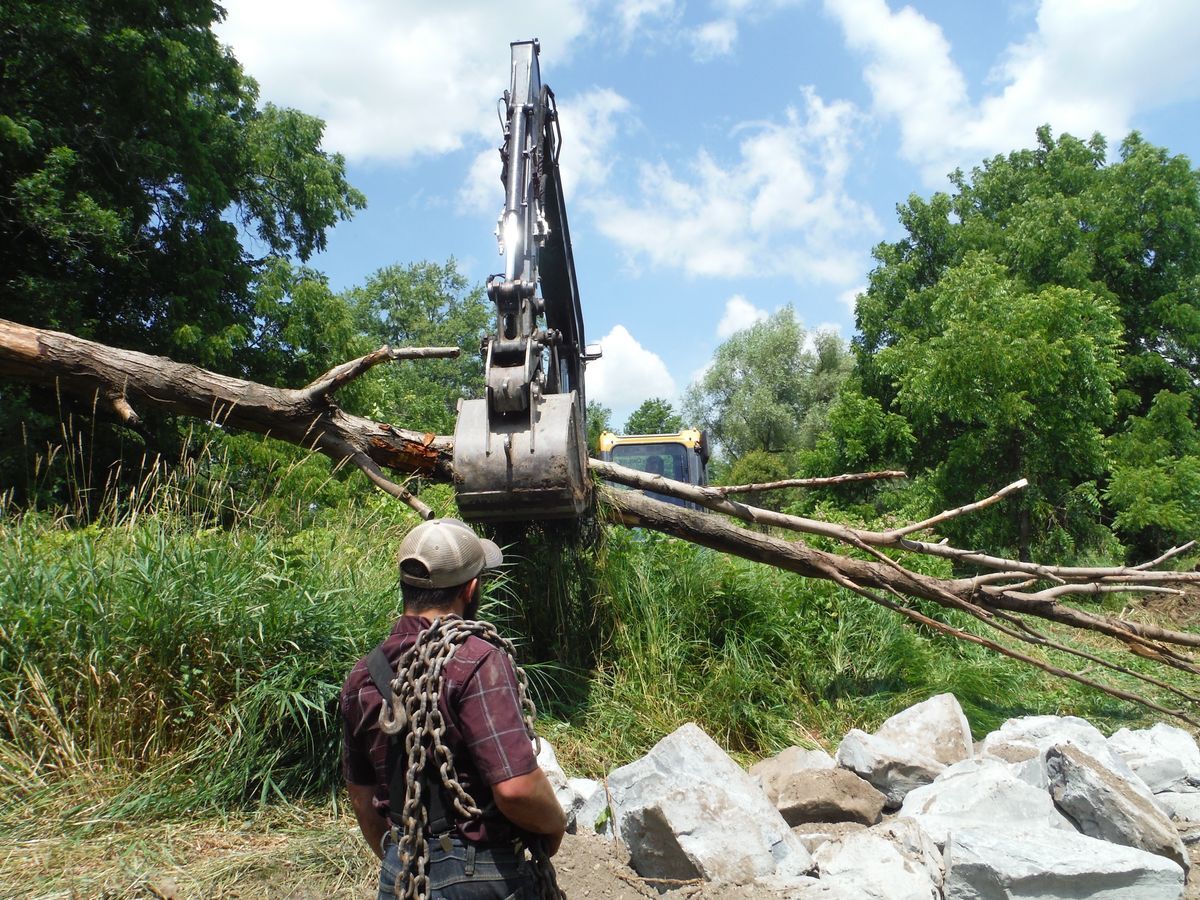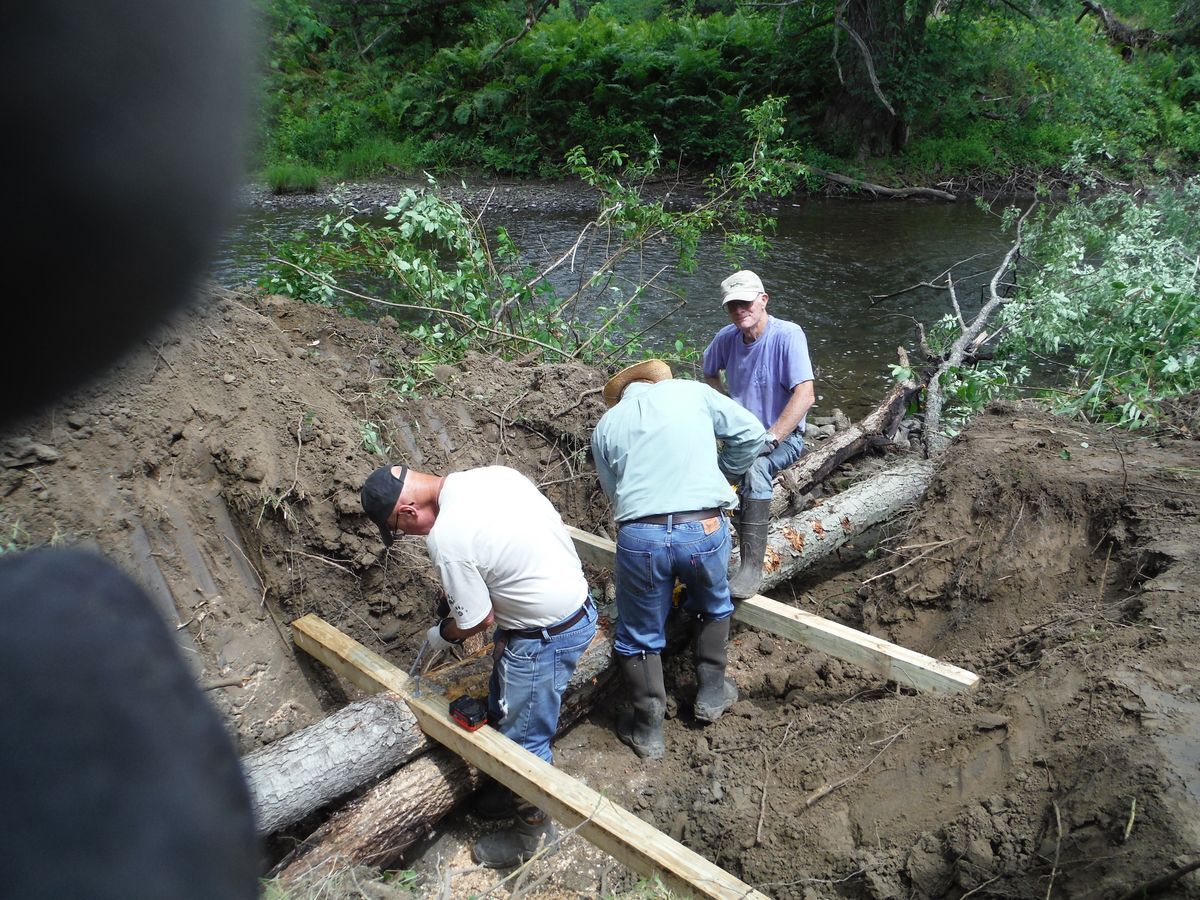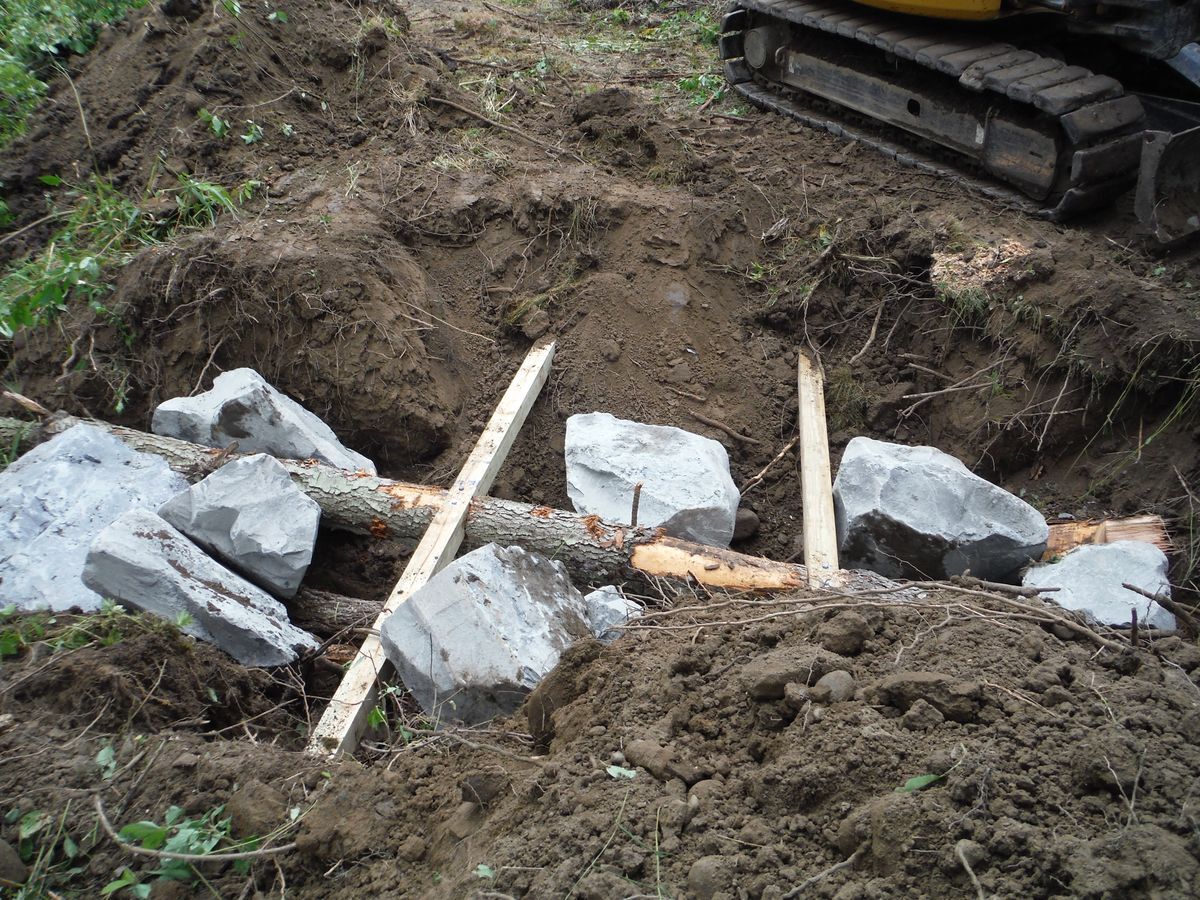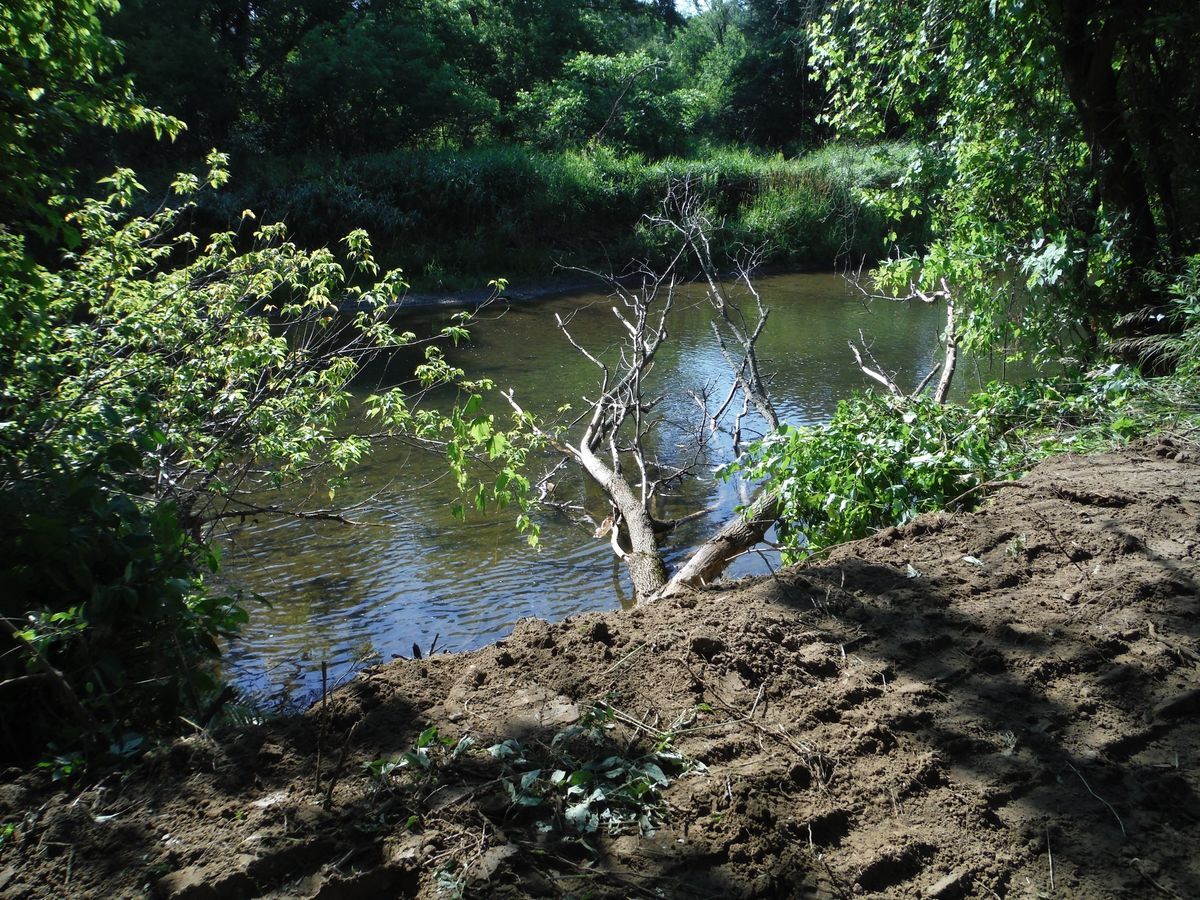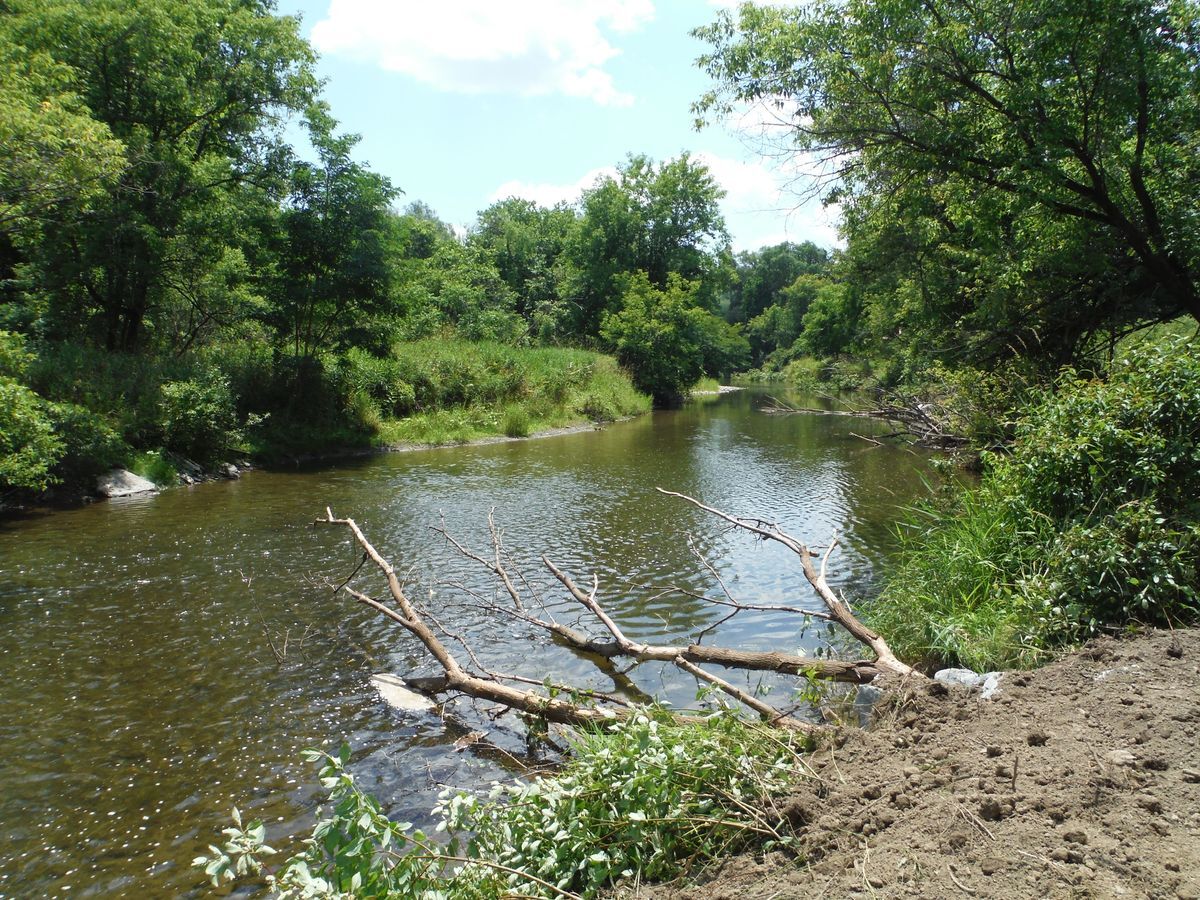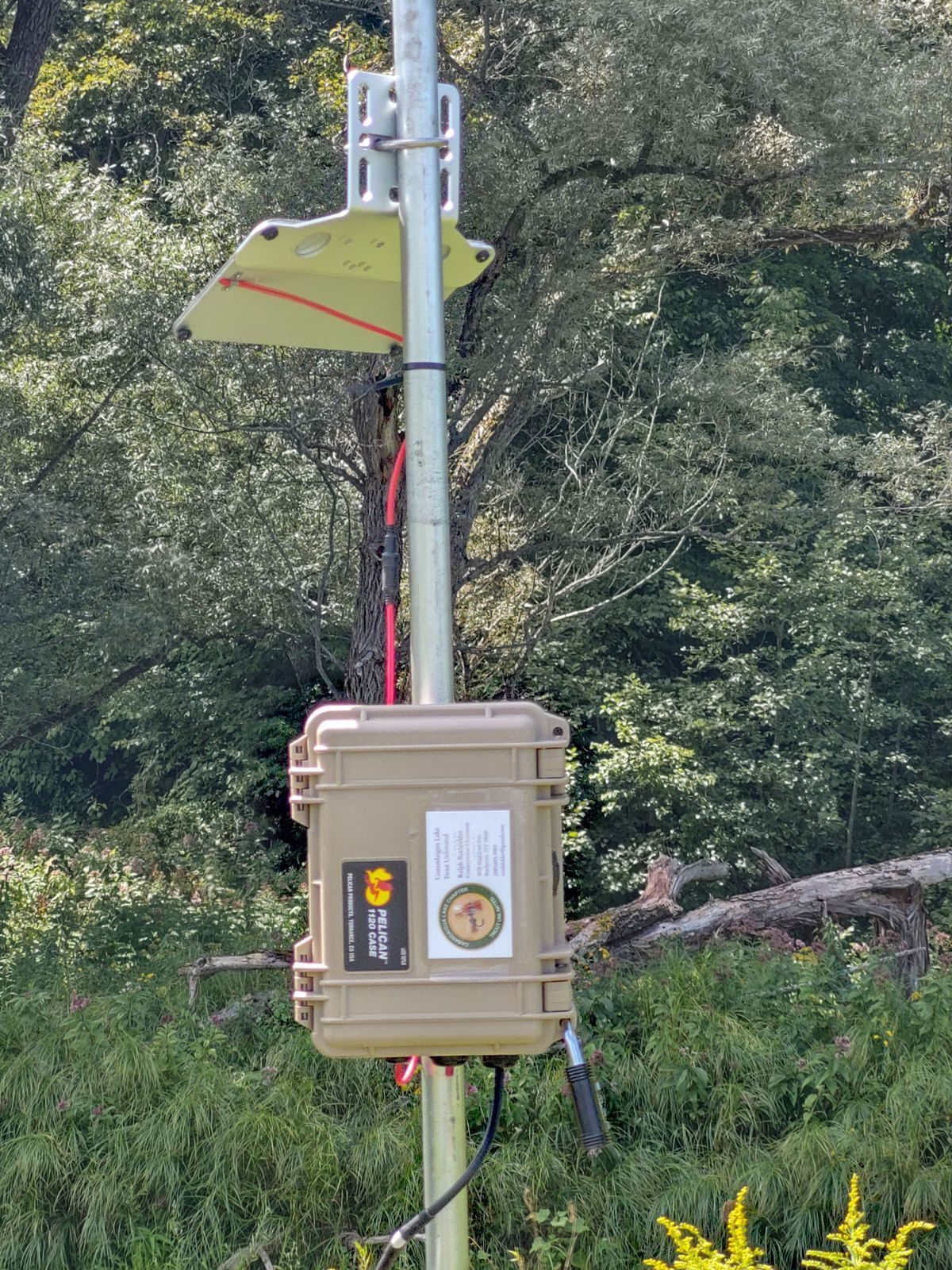The Canandaigua Lake TU Chapter Completes The Cross Road Project
The Conservation Committee of Canandaigua Lake TU Chapter, led by Al Kraus, the outgoing Chairman, and Ralph Rothfelder, the incoming Chairman, identified a project on the Cohocton River. They determined installing nine log and boulder structures over 700 feet of the stream bed would significantly improve the trout habitat. Significant funding was obtained from TU National and a small grant from the Council. This is the story about perseverance leading to a successful project; scroll below to see the project pictures at each stage.
An application was submitted to TU National's Embrace-A-Stream program in 2020 for the Cross Road Project; approval yielded an award of $9,000 in 2020/2021. The Cross Road Project was designed to add a series of nine log and boulder structures in the Cohocton River. The expected benefits of installing these structures were:
- Increasing oxygen levels in the river;
- Decreasing water temperatures;
- Creating deeper and better holding, feeding, and hiding areas for the trout;
- Improving current flow and flushing of sediments;
- Providing better protection from predators, both birds and animals; and
- Adding substrata and food for the aquatic organisms on which trout feed.
In 2021, trees along the bank that would be used to form the structures were felled; however, due to high water levels, none of the structures were built. Ideally, low water levels were required to minimize sediment flowing into the river during construction and enable placing the structures in desired locations. Finally, in August 2022, conditions were favorable to permit the installation and construction of the nine structures.
The first step was determining the location to place the structures. Each structure would consist of one or two trees held together with pressure-treated wood 4 x 4 crossbars inserted in notches cut in the tree trunks and held together with lag bolts. A large excavating machine, provided by the Steuben County Soil and Water Conservation District, dug a trench in each desired location. The structures were then assembled in each of the trenches. Once assembly was completed, the excavating machine moved large boulders around the tree trunks and crossbars and backfilled each trench. Placing the large boulders in each trench was intended to minimize the chance that winter ice and heavy spring floods did not dislodge the structures. As a final step, the ground was graded and reseeded. A Mayfly Station also was installed in the river.
The nine structures already have the desired effect on the river even though water levels are much lower than usual due to lower-than-average rainfall in 2022. Chapter members observed that the trout in the river immediately became acclimated to these structures.
Another aspect of this project is planting approximately 50 trees (swamp oak, silver maple, sycamore, and river birch) along the river bank, which will occur when cooler and wetter weather arrives in October.
Baseline sampling was completed before installing the structures. Additional sampling will be performed in 2023 or 2024 to measure the impact. If the results demonstrate that the project concept is practical, the Chapter plans to undertake similar projects at the Cohocton River in the future.
